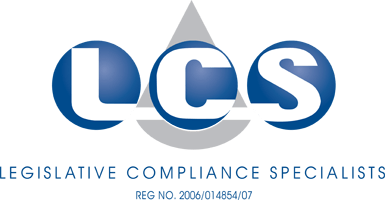Monthly Health and Safety Law update: August 2015
Comments:
The period under review contained several notices which have an indirect bearing on health and safety liability and one with a direct impact under the Mine Health and Safety Act.
New Regulations have been published under the Mine Health and Safety Act. The new Explosives Regulations repeals and replaces the previous Chapter 4 Explosives Regulations.
The new Regulations are comprehensive in nature and far more prescriptive than the previous set. Some of the key areas of change is the adoption of compulsory written procedures and new legal appointments and authorisations.
As previously, the update is available electronically. Visit https://www.legalcs.co.za/legal-updates/
Regards,
Jaco Swartz
Managing Director
The Minister of Mineral Resources has published new Explosives Regulations under the Mine Health and Safety Act Regulations.
The new Regulations do not just merely add to the current Chapter 4 Explosives Regulations, but replaces it in full. It does however follow a similar format and layout.
Some of the more critical changes include:
1. New definitions: · Blasting, · Hot holes, · Manufacture, · Old explosives, · Permitted explosives, · Primer, · Sleep over blast and · Stemming 2. Storage of explosives: New requirements for the locking of stores, containers etc. have been added. New requirements for containers of explosives, including old explosives, have been added. A duty is now placed on the employer to consult with the explosive manufacturer on the capacity of containers has been added. Measures are required to ensure that ordered or issued explosives do not exceed storage capacity are required. 3. Mine closure: A duty is placed on the employer to notify the Chief Inspector of any explosives left on a mine where closure is intended or where a mine is not being worked. 4. Destruction of explosives: Written procedures are to be drafted for the destruction of explosives. Conditions for the destruction of explosives are listed. 5. Approval of explosives: Employer to approve explosives for use in writing and ensure that all explosives are used in accordance with a written procedure. Consultation with the manufacturer in the drafting process must be proven. Specific issues which must be dealt with in the procedure are listed (including use in same sequence as issue, only primers that are required for immediate use are to be prepared etc.) 6. Manufacture of explosives: Where explosives are manufactured on a mine, a written procedure must be drafted by the employer in consultation with the manufacturer/supplier. All mobile and portable manufacturing units to be serviced inspected and maintained in accordance with a written procedure. Again consultation with the manufacturer or supplier must be documented. 7. Explosive powered tools: A written procedure on the use, storage and maintenance of explosive powered tools must be drafted in consultation with the manufacturer or supplier. 8. Spillage of explosives: Procedure to be drafted, again in consultation with the supplier or manufacturer, on minimising the risks associated with spills. 9. Competent persons: The requirements for the appointment of competent persons, in writing, are stipulated (Primary and secondary blasting). Duties include dealing with misfires and sockets according to a written procedure. While the competent persons were dealt with in the previous Chapter 4, duties are now more formalised. A written legal appointment is now also required. 10. Delivery report. The competent person now has a duty to report to the employer whenever explosives are delivered to each workplace. Report to include whether correct quantity is delivered. 11. Competent persons may be assisted. Assistants may be appointed in writing. Where such a person is appointed, the duties are specifically listed. It is interesting to note that where the previous Regulations allowed for the assistant to initiate blasts, this has now been omitted. 12. Electrical initiation. Where initiation is electrical, a list of SANS codes (SANS 1717 etc.) is referenced in terms of the devices used. 13. Precautions prior to blasting. In terms of precautions, a distinction is drawn between coal, surface and other mines. The precautions are listed and include wetting practices, face requirements, when explosives may be brought to working places, stemming and tamping requirements, placement of guards on surface etc. 14. Precautions for misfires, sockets and old explosives. Written procedures, in consultation with manufacturers and suppliers, to be drafted for dealing with misfires. Minimum requirements for inclusion in the procedure are listed. 15. Marking and drilling. A distinction is drawn between underground and surface operations. The broad requirement is for the drafting of a written procedure, again after consultation, which has to address certain topics as a minimum. 16. Prevention of flammable gas and coal dust explosions. Elements addressed include the design and positioning of shot holes, testing for gas in accordance with a written procedure etc. 17. Shot hole stemming and tamping. Measures that must be taken includes the minimum length of tamping, material to be used etc. 18. In shift blasting. Minimum requirements are listed for blasting taking place in shift. This includes that permission must be given by a person authorised in writing to do so. This implies that legal appointments would have to address this authorisation. 19. General. General issues include: · Requirements for exemption from general rule that a clearance in terms of blasting of 500 meters must be adhered to, · Drafting of written procedure for secondary blasting with minimum requirements to be addressed, · General requirements for drilling and blasting in tunnels not associated with mineral extraction, · Prohibition on ignition sources, · Duty on employees to evacuate unsafe areas once warned to do so, · Duty on employees to report gassing, 20. Competence. The Notice also serves to amend Chapter 22 of the Mine Health and Safety Act Regulations in terms of the prescribed competence of the persons to be appointed in terms of Chapter 4. · For the Primary and Secondary Blasting competence, a person must be in possession of a certificate or qualification acknowledged by the DMR, valid for the class of mine for which person is to be appointed, · For the person to assist the Primary and Secondary blaster, the person must be MQA accredited or is qualified by virtue of knowledge, training, experience and skills, is familiar with the Regulations and has been trained to recognize risk.
The new Chapter 4 Regulations are far more detailed than its predecessor. While it may at first glance appear to be more onerous, we would welcome it insofar as it formalises a lot of what the employer would previously have had to implement in order to prove it had acted “as far as is reasonably practicable”.
Some of the specific issues that would have to be addressed include:
1. Updating all written procedures and drafting new procedures where so required in the Regulations, 2. Ensuring that consultation had taken place with the manufacturer/supplier in the drafting process, 3. Putting documented proof in place that consultation had taken place, 4. Incorporating OEM references in documentation, 5. Updating legal appointment structures and appointment letters. As most duties are placed on the employer, employer appointees need to ensure that proof is available that specific duties have been assigned to the relevant role players.
In practice, LCS suggest that a gap analysis is undertaken with the new Regulations as baseline in order for corrective steps to be taken prior to the new Regulation coming into effect.
The Compensation Commissioner has published a notice in terms of the COID Act.
The notice deals with the minimum levels of pension under the compensation fund. It deals with the pension payable to current pensioners as well as the amounts payable to spouses and children where the pensioner is deceased.
1. Schedule 1: New Standards Some of the more important new standards include: · SANS 62196-3: 2015 Conductive charging of electrical vehicles
2. Schedule 2: Amendment of existing standards Some of the more important amended standards include: · SANS 1107: 2015 Disposable Condensed Aerosol Fire Extinguishers · SANS 543: 2015 Household and Similar Electrical Appliances – Safety
3. Schedule 3: Cancellation of standards The following standards have been cancelled · SANS 61241-11: 2007 Electrical Apparatus for use in the Presence of Combustible Dust – Intrinsic Safety
4. Schedule 4: Contact details This has remained unchanged.
FOR ANY FURTHER INFORMATION, COMMENTS OR QUERIES, PLEASE DO NOT HESITATE TO CONTACT THE WRITER OR VISIT OUR WEBSITE AT WWW.LEGALCS.CO.ZA
Regards,
Jaco Swartz Managing Director Legislative Compliance Specialists (Pty.) Ltd. 011 704 4814 082 898 9463
|
||||||||||||||||||||||||||||||||||||||||||||||||||||||||||||||||||||||||||||||||||||||||||||||||||||||||||||||||||||||||||||||||

